Top 25 Longest Wars/Conflicts in Human History
| Table of Contents |
Conflict and war are an inevitable part of life on Earth. The cruel truth of war and its consequences is known to everyone but it continues to happen in different ways. Through the ages, the world has witnessed battles between nations that changed the course of history and long-lasting conflicts that lasted from generation to generation.
Some wars have even lasted longer than the empires that started them.
From many different sources, KnowInsiders compiles the longest wars in human history.
What is War? Definition of War
There are numerous concepts surrounding war. However, there is little difference in content between them.
The most widely accepted view is that "war is an organized armed conflict between opposing political units that has serious consequences."
Internal conflicts, revolutions, guerrilla activities, terrorist campaigns, crises that result in border violations, and punitive attacks are all excluded from this definition of war. Limited or ongoing confrontations that do not escalate into a direct military conflict.
According to conventional convention, for a conflict to be classified as a war, the number of people killed must be at least 1,000. Other types of war, such as civil wars within a country, are also classified as wars under this definition.
War is also used metaphorically in the phrases 'class war' and 'Cold War'.
Learn more: What is War & How Many Conflicts or Disputes in the World Right Now
Top 25 Longest Wars/Conflicts in the World of All Time
1. Reconquista - Iberian Religious War: 781 Year
> Duration: 711-1492 (781 years)
> Combatants: Spanish Empire and the Moors
> Killed: 7 million
> Fought in: Spain
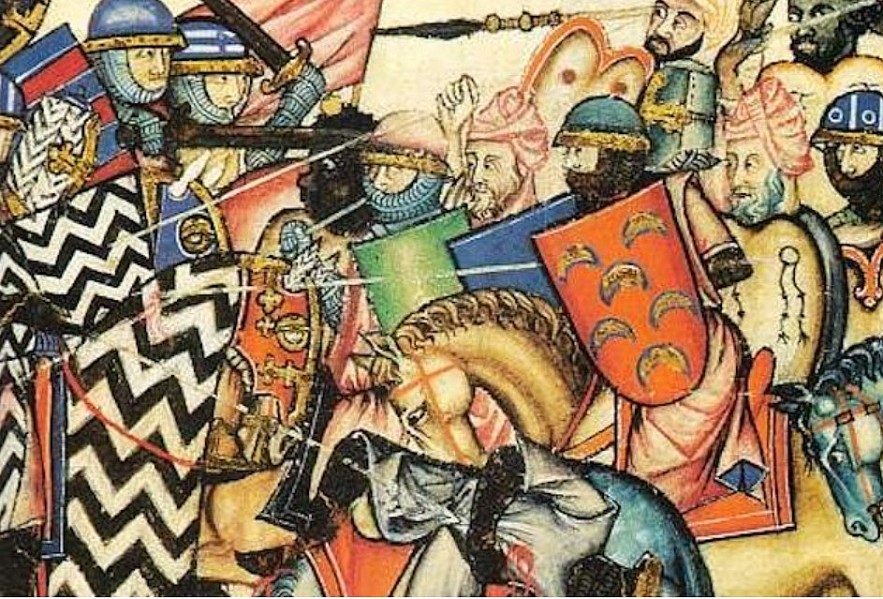 |
| Reconquista - Iberian Religious War |
The Reconquista, which lasted an astounding 781 years, was a protracted and difficult conflict between Spanish and Portuguese armies and the Muslim rulers of the Iberian Peninsula.
When an Islamic-Berber army crossed the Straight of Gibraltar in 711 CE, the conflict officially started. The Moors took control of most of Iberia by 718 CE after these invaders invaded Spain and Portugal. The Cordoban Caliphate's might overthrew Christian kingdoms until the caliph's collapse in the eleventh century.
The war was primarily motivated by religious fervor and territorial expansion, though there were many intricate political and economic factors at play as well. Throughout the centuries, Christian forces gradually advanced southward as part of the Reconquista. The final Muslim stronghold, the Emirate of Granada, fell in 1492, marking its end. Isabella I of Castile and Ferdinand II of Aragon led the Christian forces that took the city, thereby bringing an end to Muslim rule in Iberia.
2. Roman-Germanic Wars - 708 Years
> Duration: 113 B.C.-A.D. 596 CE (708 years)
> Combatants: Roman Empire and Germanic ancestral regions
> Killed: unknown
> Fought in: Italy/Germany
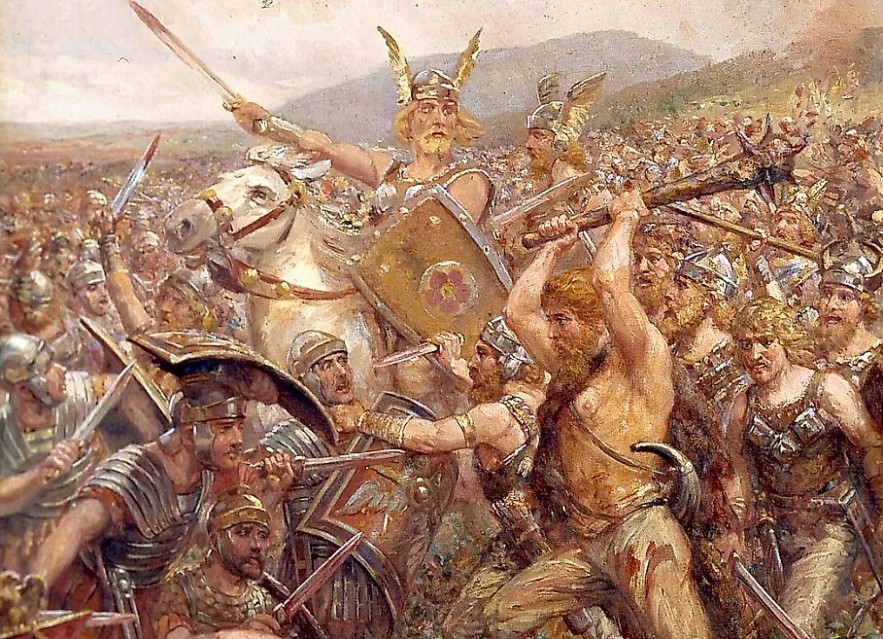 |
| Roman-Germanic Wars |
The Roman-Germanic Wars were a sequence of wars that took place between 113 BC and 596 CE, a period of 708 years.
The Roman Empire and Germanic ancestral regions were driven from their places between the second and tenth centuries CE as a result of this clash between the two civilizations.
Even though there were many conflicts and coalitions throughout these centuries, the official fall of the Western Roman Empire in 476—when Romulus Augustus lost to Odoacer—was a momentous occasion. Frankish and Visigoth rulers engaged with Eastern Roman generals from the Byzantine Empire over the course of the next 120 years, continuing to tear apart the Roman Empire.
The Byzantine-Lombard wars coincide with the Roman-Germanic wars, and the 708-year conflict came to an end when Western Rome fell. In summary, the Roman-Germanic Wars affected regions of Europe and lasted an exceptionally long time.
3. Anglo-French Wars - 706 Years
> Duration: 1109 CE.-1815 (706 years)
> Combatants: France and England
> Killed: unknown
> Fought in: Europe
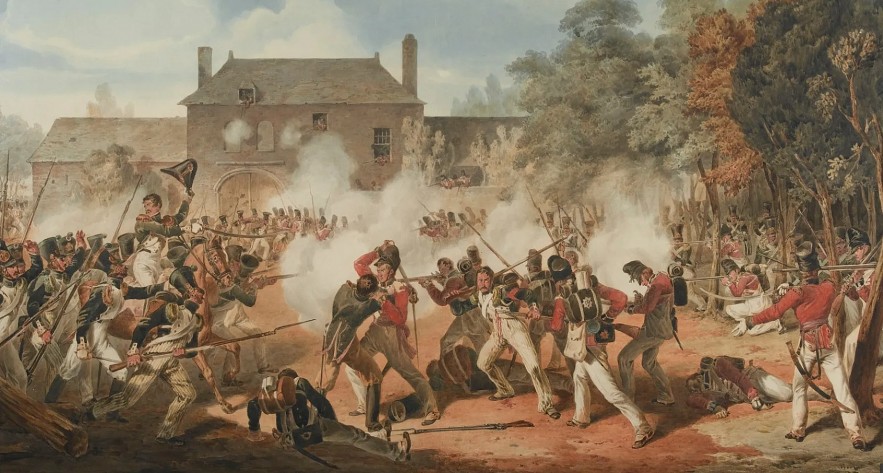 |
| The Battle of Waterloo, 1815. |
The Anglo-French Wars were a sequence of wars that lasted 706 years, from 1109 CE to Napoleon's second defeat in 1815.
Napoleon's Empire finally gave in to the combined might of Europe at that point. The main goal of the Anglo-French Wars, which included notable engagements like Agincourt, Crecy, and Waterloo, was to gain control over French territory.
During the early struggles, the renowned British Longbowmen—who were trained from an early age to wield heavy yew longbows—were successfully deployed. The Anglo-French Wars, however, also had significant effects outside of Europe since they were crucial in the establishment of independent colonies abroad. For instance, during the American Revolution of 1775, France gave the United States vital resources.
Surprisingly, there were relatively long intervals of peace interspersed throughout the numerous battles that broke out between France and England during this time. That irregularity serves as an example of how fluid the geopolitical environment was at the time, with tensions capable of quickly turning from war to peace.
4. Roman-Persian Wars: 680 Years
> Duration: 92 B.C.-A.D. 629 (721 years)
> Combatants: Roman Republic/Empire and the Parthians and the Sassanids in Persia
> Killed: unknown
> Fought in: Modern-day Iran
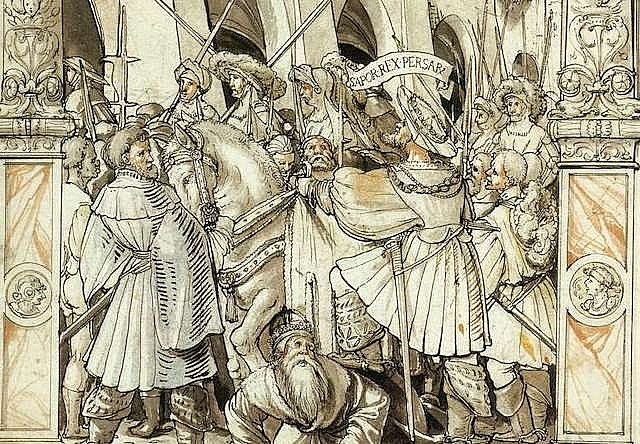 |
| Roman-Persian Wars |
The Persian-Roman Wars were among the longest-lasting wars in history, spanning from 53 BC to 627 AD. It eventually saw battles between the Parthian and Sassanid Empires in the east and the Roman Republic, Roman Empire, and Byzantine Empire in the west. It outlasted its founding empires, Rome and Parthia.
Because of its incredible scope and length, which covered a region that stretched from Mesopotamia in the Middle East to the Transcaucasus in eastern Europe, the war has been referred to as the Great War of antiquity. The Roman-Persian wars ensured that neither Persia nor the Byzantine empire had the resources to repel the approaching Islamic armies, even though neither side gained any appreciable territory.
5. Byzantine-Bulgarian Wars: 675 Years
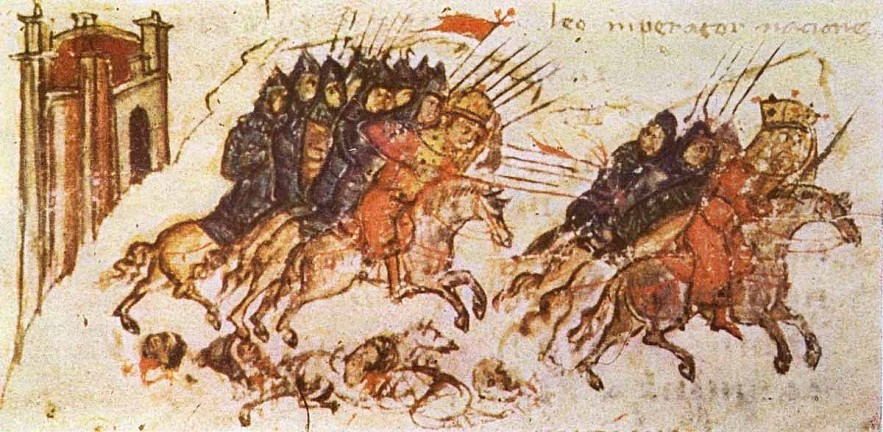 |
| Byzantine-Bulgarian Wars |
A sequence of battles known as the Byzantine-Bulgarian Wars transpired over a period of 675 years, involving the Eastern Roman (Byzantine) Empire and Bulgaria.
The conflicts started in 680 CE when Khan Asparuh led his people, the Bulgars, to build their kingdom by crossing the Danube into Byzantine territory.
Both empires signed long-term truces and treaties to bring about some degree of peace and security during the centuries-long war, despite the fact that the Bulgarian Empire and its accomplishments seriously threatened Byzantium's sovereignty. Under Tsar Simeon and Tsar Ivan Alexander, who were keen to extend their Empire into more Byzantine territory, this tranquility would finally break down.
Both empires came to an end when Bulgaria emerged victorious in the final conflict of the series in 1355 CE and the Ottoman conquest followed.
6. Crusades - 604 Years
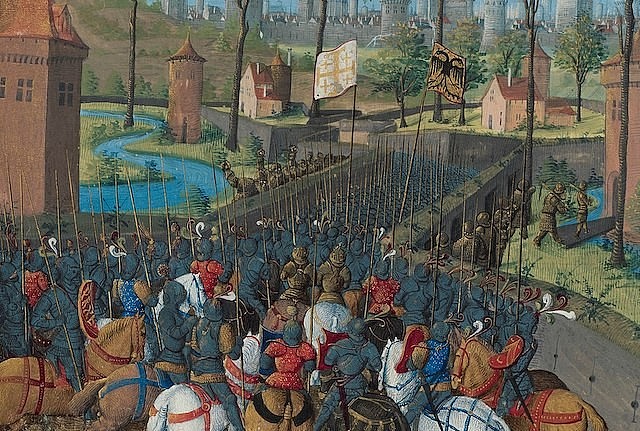 |
| Crusades |
The Latin Church approved of a string of religious conflicts known as the Crusades that lasted from 1095 to 1699.
Armies from Christian kingdoms in Europe made attempts to take over Muslim-held territories in the Levant region of the Middle East during this time. Furthermore, Christian Europe wanted to protect or retake the Kingdom of Jerusalem from Islamic domination. Here, the church's use of indulgences—a controversial religious strategy—to persuade men to fight in the crusades gained notoriety.
Despite starting a millennium ago, the wars had a profound impact on Europe and Islam that went well beyond the battlefield; most historians concur that the religious tensions that resulted from these conflicts persist to this day.
Unfortunately, a misunderstanding of more than 604 years of war, disruption, and unrest has resulted from the frequently misunderstood history of these medieval conflicts, which has led to the false impression that they ended earlier than they actually did.
7. Arab-Byzantine Wars: 421 Years
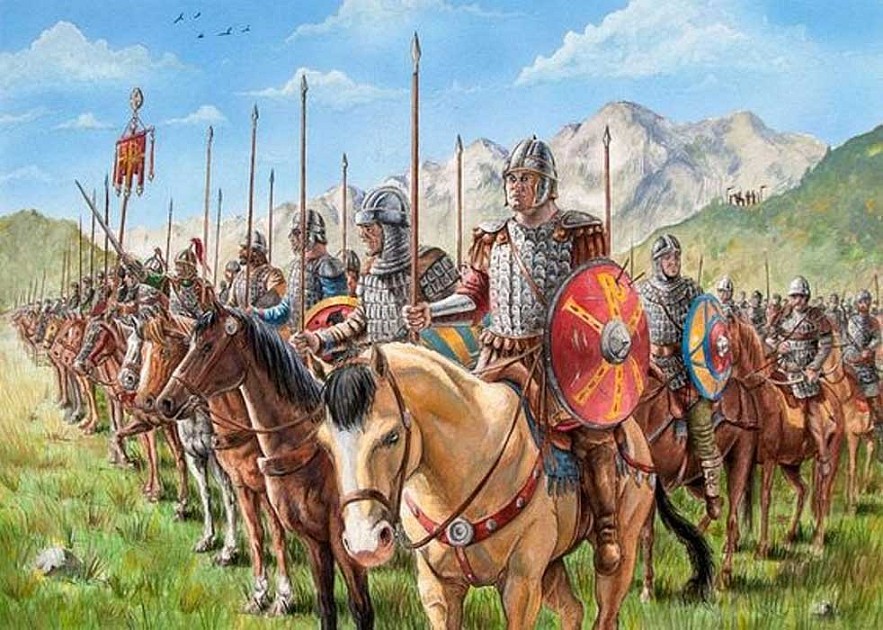 |
| Arab-Byzantine Wars |
Over the course of four centuries and one year, there were several conflicts known as the Arab-Byzantine Wars. Numerous factors, including geopolitical, religious, and economic ones, contributed to this long-standing animosity between the two powerful empires, which resulted in multiple battles until they were resolved in 1050 CE.
After Muhammad rebelled against the Byzantine Empire in 629 CE, Arab armies captured Egypt, Persia, and the former Roman Levant in 638 CE.
Before the Empire benefited from a resurgence in the tenth century, the Byzantines endured more losses. By the 1100s, the Byzantine Empire had reclaimed complete dominance thanks to European assistance during the Crusades.
After the Arab-Byzantine Wars ended in the 1050s, the threat posed by the Arabs was supplanted by the Seljuk Turks. These wars' aftermaths molded the Middle East and Europe and gave rise to one of the most notorious resentments in human history.
8. Yaqui Wars: 396 Years
 |
| Yaqui Wars |
The Yaqui Indians were the enemy of New Spain, and later Mexico, in a bloody civil war that lasted from 1533 to 1929. Violence during the Yaqui Wars was sporadic but intense, frequently culminating in summary executions and other crimes against the indigenous populace.
The invasion of native territory by European and Mexican settlers, especially the ancestral lands claimed by the Yaqui, was the main cause of the conflict. Combat only took place in the state of Sonora, where the Yaqui people were subdued through manhunts and the use of scorched-earth tactics by the Mexican government, which combined military might with private armies. The forcible deportation of thousands of people to far-off places severely weakened the rebels' fighting capacity, which ultimately led to their defeat in 1929.
9. Yemeni-Ottoman Conflicts: 373 Years
The conflicts known as the Yemeni-Ottoman conflicts took place primarily between the Ottoman Empire and different factions in Yemen between 1538 and 1911.
Ottoman attempts to expand their imperial rule over parts of the Arabian Peninsula, specifically Yemen, exacerbated the conflict. Many of these encounters were led by Selim II and Suleiman I, two Ottoman governors who, when diplomatic talks broke down, turned to military campaigns against local rulers.
The Ottomans gained territory as a result of these wars, giving them more authority over Yemen and the surrounding areas. Both sides suffered significant losses in terms of men and resources during the multiple incursions that occurred during this time, leaving a lasting effect on Yemeni culture and history.
After 373 years of fighting, they finally came to an agreement in 1911, allowing Yemen autonomy under Ottoman suzerainty, which lasted until the start of World War I a few years later.
10. Moroccan-Portuguese Conflicts: 354 Years
The Moroccan-Portuguese conflicts, which took place between the Portuguese Empire and the Kingdoms of Morocco, spanned from 1415 to 1769 CE.
Portugal's acquisition of Morocco was the primary goal of the war, which allowed them to continue being the dominant naval force in the Western Mediterranean.
The Portuguese took control of Ceuta in 1415 and made attempts to take control of other coastal cities like Tangier and Azemmour, which sparked the start of this conflict. Under the leadership of multiple Sultans, including Sultan Abd al-Malik, the Moroccans fought back and defeated a Portuguese attack in 1578.
Nevertheless, Portugal was able to capture a number of fortresses along the Moroccan coast in spite of suffering multiple setbacks at the hands of Abd al-Malik. But after Portugal's King Sebastian was killed in combat, all of the Portuguese territories were either abandoned or reclaimed over the course of the following 190 years.
This era of comparatively calm conditions persisted until 1769, when Portugal eventually withdrew its troops from Moroccan territory.
11. Russo-Turkish Wars: 350 Years
The 12 battles known as the Russo-Turkish wars took place between the Ottoman and Russian empires between 1568 and 1918.
The two empires engaged in a number of conflicts during this time, mostly over territory in Eastern Europe and the Caucasus, access to the Black Sea, and control of holy sites in the Holy Land. The first Ottoman-Russian war broke out in 1569 when Ottoman sultan Selim II sent a military expedition to Astrakhan in an attempt to drive the Russians out of the lower Volga. Following that, there were a lot of conflicts over regions like Crimea, which was taken over by Russia in 1783 after it had changed hands several times.
Russia declared war on Turkey in 1828 as a result of Turkey's support for Greece's independence movement, sparking the next significant conflict. Later, this escalation spread to Bulgaria and Romania, giving Russia more territory gains.
Later, in the First World War, Russia allied with Britain to fight Germany and its allies, including Turkey. This alliance helped Russia and its allies win the war, and the Treaty of Brest-Litovsk in 1918 officially ended hostilities.
12. Spanish-Moro Conflict: 333 Years
The Spanish-Moro conflict, which lasted from 1565 to 1898 CE, was a centuries-long struggle in the Philippines between the Spanish Empire and different Muslim factions.
The Spanish fought Muslim forces like the Tausūg, Maguindanao, Maranao, and other tribes during this time. These tribes were fighting for dominance over areas of the archipelago that is now the Philippines. The biggest battle of this conflict took place in 1571 at the Battle of Manila, where a Spanish-led invading fleet defeated a sizable Moro force led by Datu Lapulapu who lived in the city.
Sultan Kudarat later launched a broad uprising against Spanish colonial rule in 1637. However, the Spanish army's superior technology ultimately proved to be too much for them, and as a result, Muslim forces withdrew from a large portion of the nation.
The 19th century saw ongoing military conflict between the two nations until 1898, when Spain gave up its claim to its colonies as a result of losing the Spanish-American War.
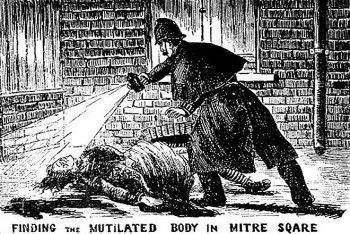 The World's 6 Greatest Mysteries That Probably Never be Solved The World's 6 Greatest Mysteries That Probably Never be Solved |
13. Arauco War: 289 Years
> Duration: 1536-1825 (289 years)
> Combatants: The Araucanian Indians of Chile and the Spanish Empire
> Killed: unknown
> Fought in: Modern-day Chile, the southern part of South America
For roughly 300 years, the Spanish attempted and failed to colonize various Araucanian groups, including the Mapuche, Picunche, and Huilliche people of modern-day Chile. The Bio Bio River's natural border helped the Mapuche people withstand the Spanish conquistadors' attempts to take over most of South America.
Chile gained independence after Spain declared peace with the Mapuche people and with Chile in 1825.
14. Byzantine-Seljuq War: 260 Years
> Duration: 1048-1308 (260 years)
> Combatants: Byzantine Empire and the Seljuk Turks
> Killed: unknown
> Fought in: Asia Minor and Syria
The Byzantine Empire's longest-lasting conflict lasted over two centuries and involved the Seljuk Turks. For 260 years, the Seljuks and Byzantines ruled over and ceded territory in Asia Minor and its surroundings.
The Seljuk Turks lost some of their recently gained territory as a result of the Crusades, but the Byzantine Empire overreached itself and was unable to hold onto its territory. The battle ended after 260 years, hastening the fall of the Byzantine Empire.
15. Byzantine-Ottoman War: 214 Years
> Duration: 1265-1479 (214 years)
> Combatants: Byzantine Empire and the Ottoman Empire
> Killed: unknown
> Fought in: Modern-day Turkey, western Asia Minor
During the Byzantine-Ottoman Wars, the Byzantine Empire brought an end to the Middle Ages in Europe. The territory ruled by the Byzantines shrank as the Ottoman Empire grew during the course of the thirteenth, fourteenth, and fifteenth centuries.
Mehmed II dealt a severe blow to the Byzantines when he seized control of the fiercely fortified city of Constantinople.
16. Australian Frontier Wars: 146 years
When British ships arrived in Australia in 1788, the native population, who were ill-prepared and underarmed, faced off against the well-trained and experienced imperial British army in the first colonial frontier wars. Despite these chances, the fight proved unsolvable for nearly another 150 years, resulting in the deaths of up to 60,000 indigenous people, according to some estimates.
Similar to other parts of the world, the era was characterized by extreme violence directed both at civilians and military targets, which led to the near eradication of the native population as a result of disease or conflict. Between 1788 and 1900, the native population was estimated to have decreased by approximately 90%.
17. Hundred Years’ War: 116 Years
> Duration: 1337-1453 (116 years)
> Combatants: House of Plantagenet (or House of Anjou) of England and House of Valois of France
> Killed: 3.5 million
> Fought in: Modern-day France
The Hundred Years' War actually lasted over a century to determine the ruler of modern-day France.
After Charles IV died, 116 years of conflict ensued between the House Plantagenet, the English rulers, and the House Valois, descendants of earlier French monarchs, over who would rule France. Title claims became more complex as European royal families intermarried. There was intermittent warfare between the new rulers.
Both parties had internal conflicts to deal with in addition to their conflict with each other. The Wars of the Roses in England gave Charles VII of House Valois the chance to use that advantage and win the war.
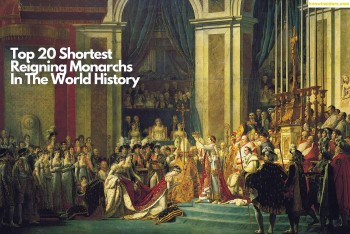 Top 20+ Shortest Reigning Monarchs In History Top 20+ Shortest Reigning Monarchs In History |
18. Seleucid-Parthia War
> Duration: 238 B.C.-129 B.C. (109 years)
> Combatants: Seleucid Empire of Persia and the state of Parthia
> Killed: unknown
> Fought in: Mesopotamia, modern-day Iran, Central Asia
Like many other ancient empires, the Seleucid Empire, which spanned from Thrace in Europe to the border of India, was plagued by a number of internal and external conflicts that progressively weakened its power.
After a short while, a succession of battles against the Arsacids—who had taken Parthia in 235 B.C.—saw the empire retake Parthia (modern-day Iran).
But that was only one of the numerous battles the empire was engaged in at the time. The Arsacids, under the leadership of Mithridates I, dealt the Seleucid Empire its fatal blow when they took over nearly all of its territories, including Mesopotamia.
19. Sengoku Period: 101 Years
One of the most turbulent periods in Japanese history was the Sengoku period. The?nin War, a nationwide power struggle between rival samurai clans, started it all around 1467. The local daimyos, or feudal lords, and their strong armies were the main combatants, vying for influence in the power vacuum created by the Ashikaga shogunate's decline and eventual defeat.
Throughout this time, there were numerous battles, sieges, and skirmishes throughout Japan. After roughly a century of fighting, the country was split up into several small fiefdoms, each ruled by a few hundred warlords. Oda Nobunga became the most powerful daimyo at the end of the Sengoku period in 1568, but Toyotomi Hideyoshi, his successor, was ultimately responsible for uniting Japan into a single state.
20. Dutch War for Independence: 80 Years
> Duration: 1568-1648 (80 years)
> Combatants: Seventeen Provinces in the Netherlands against the Spanish King
> Killed: 100,000+
> Fought in: The Low Countries
The Dutch War for Independence, also known as the 80 Years War, marked the end of Spanish rule in the region and the spread of Protestantism across Europe.
William of Orange led the mostly protestant Dutch people in a rebellion against their Catholic overlords following years of Spanish oppression. Despite having a larger force, Spain was preoccupied with its conflicts with France and England, which gave the Dutch the opportunity to score important upset victories.
In the 1630s, the Netherlands took the side of France. The two allies moved forward into Spanish-ruled territory. When Spanish officials witnessed the combined might of the Dutch and French soldiers, they signed a truce in 1648.
21. Eighty Years’ War
The Eighty Years' War, as its name suggests, was an 80-year conflict that broke out between the Dutch Republic and the Spanish Empire in 1568–1648. Since the conflict started because of political and religious tensions in the Spanish-controlled Netherlands, it is also occasionally referred to as the War of Dutch Independence from Spain.
William I of Orange led the Dutch Protestant uprising against the Catholic Spanish Empire, which was largely a result of Philip II's harsh and discriminatory policies. In an effort to keep control of the area and quell Protestantism, Spanish authorities started a war that would soon engulf all of Europe in a bloody struggle known as the Thirty Years' War.
The Dutch Republic was formally recognized as an independent state of Europe, despite Spain's early victories in the conflict due to France's entry into the conflict. The Peace of Münster in 1648 marked the end of both the Thirty and Eighty Years' Wars, which were significant in the larger European struggle for political and religious freedom.
22. Anglo-Afghan Wars: 80 years
The term "Anglo-Afghan Wars" describes a sequence of three wars that broke out between Afghanistan and Great Britain between 1839 and 1919. They were a part of the Great Game, a larger geopolitical conflict between the British and Russian Empire that started in 1830.
In an effort to defend its interests in India, British forces engaged in combat with Afghan forces under the command of several emperors, including Dost Mohammad Khan and Sher Ali Khan, throughout the protracted conflict. Major battles occurred in cities like Kabul and Kandahar, and the majority of the fighting took place inside Afghanistan.
Similar to its other colonies, the British were able to secure some early wins and hold on to a sizable portion of territory during the first invasion because of the close alliances and diplomatic ties they forged with local Afghan factions. That was soon to change, though, as the British contingent's disastrous 1842 retreat from the country nearly resulted in their extinction. The British government was forced to sign an armistice giving up authority over Afghanistan's foreign affairs by the time it ended in 1919.
23. Karen Conflict
> Duration: 1949-present (74 years)
> Combatants: Karen National Union and the Burmese Tatmadaw
> Killed: unknown
> Fought in: Myanmar
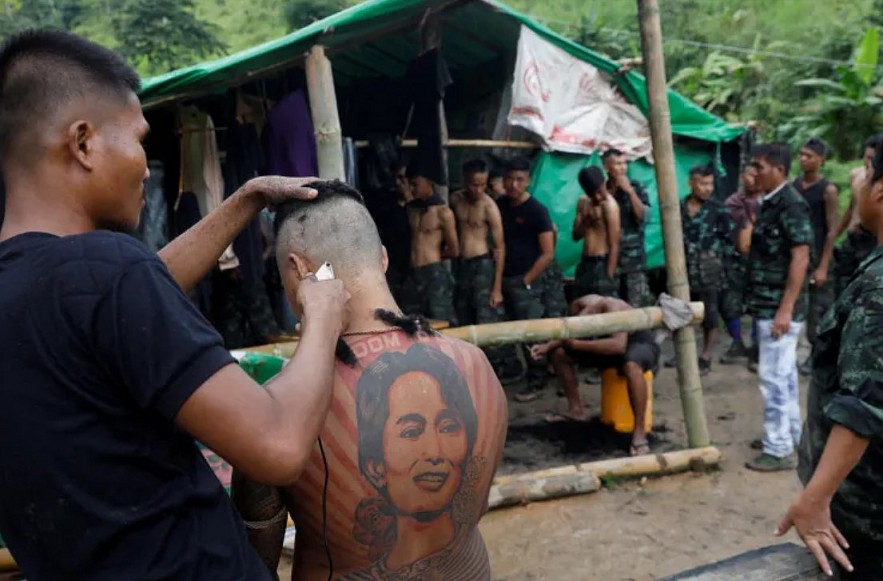 |
| Karen Conflict |
In Karen State, Myanmar (formerly known as Karen State, Burma), there is an armed conflict known as the Karen conflict. It is a part of the larger conflict that exists inside Myanmar between different minority groups and the military government.Since 1949, proponents of Karen nationalism have fought for the creation of Kawthoolei, an independent state.The two most well-known Karen rebel organizations are the Karen National Union (KNU) and its Karen National Liberation Army (KNLA).The fighting has forced hundreds of thousands of civilians to flee to neighboring Thailand, where they are now living in camps for refugees.
Karen soldiers' roles in quelling Burmese uprisings in the late 19th century and the British "direct and indirect rule" policy have contributed to tensions between the Karen people and the Burmese ethnic majority in Myanmar since the country's colonial era.In order to put down a communist uprising, the Karen National Union (KNU) formed the Karen National Defence Organization (KNDO) as its armed wing around the time of Burma's independence. Following a period of peace negotiations and the reintroduction of communism into national politics, a sequence of conflicts, confrontations, and battles resulted in the KNU officially declaring war on the Burmese government on January 31, 1949.
24. Korean War
> Duration: 1950-present (73 years)
> Combatants: North Korea, South Korea, China, United States, NATO
> Killed: 1.2 million
> Fought in: Korean peninsula
Although there is no longer military combat between the United States and South Korea on the Korean Peninsula, the two countries are still technically at war because they have never formally signed a peace treaty.
Tensions between the two countries are still high and don't seem to be getting any lower, despite recent signs that things may be improving—the heads of state of North and South Korea met in 2018.
25. Great Beaver Wars – 61 years
The Great Beaver Wars, which started in 1640, were a sequence of wars fought between the French alliance with several Algonquian-speaking native American tribes residing in the Ohio Country and Great Lakes regions, and the Iroquois Confederacy, also known as the Five Nations.
One of the longest wars in the continent's history, the conflict lasted for more than 60 years until 1701.
The main reason was that the Iroquois Confederacy launched military campaigns against rival groups like the Huron, Petun, and Erie tribes in order to gain control over the lucrative fur trade in the area. The Great Lakes and Ohio River Valley regions, which at the time were the principal hubs for fur trading, saw the brunt of the wars. Numerous Native American tribes suffered from decimation or were forced to relocate as a result of the fighting. It also upset the preexisting power dynamics in the area and considerably reduced the power of the tribes, which were later absorbed into or moved by European colonization.
Wars of the Roses in England> Duration: 1455-1487 (32 years) > Combatants: England’s royal houses House of Lancaster and House of York > Killed: 100,000 > Fought in: England Because Henry VI of the House of Lancaster was mentally ill and unable to rule, the families of Lancaster and York fought each other for control of the British throne during the Wars of the Roses. Both families felt they should be king and queen because they had a common ancestor. Following decades of conflict, Henry VII of the Lancasters was crowned king following the assassination of Richard III of York. He soon married a York, bringing the houses together and ending the hostilities. This conflict served as a major inspiration for George R.R. Martin's book series "A Song of Ice and Fire," which eventually led to the success of HBO's hit series "Game of Thrones." The names of the competing families, York and Lancaster, are the source of the names Lannister and Stark in the books. |
In Conclusion
The longest wars can vary from protracted conflicts between global superpowers spanning centuries to protracted conflicts between cultures and religions spanning millennia. The protracted and resolute conflicts have a profound impact on worldwide politics and culture, resulting in enduring conflict for both factions across successive generations.
The consequences of these wars have been significant and have required centuries to resolve. Gaining insight into the ramifications of these intricate conflicts is crucial for comprehending our present epoch, which is significantly more dynamic and unpredictable than previous eras.
It is anticipated that the construction of bridges of peace will persist, facilitating the progression of humanity beyond tumultuous pasts and fostering collaborative efforts towards a more promising future for all individuals.
 Top 5 Youngest And Oldest U.S Presidents in History Top 5 Youngest And Oldest U.S Presidents in History Since the founding of the United States, there have been 46 presidents. Which of these is the President who is currently the youngest or oldest? |
 The World's 6 Greatest Mysteries That Probably Never be Solved The World's 6 Greatest Mysteries That Probably Never be Solved There won't be an answer for every mystery, and some will always stay a mystery. These are the greatest unsolved historical mysteries in the world. |
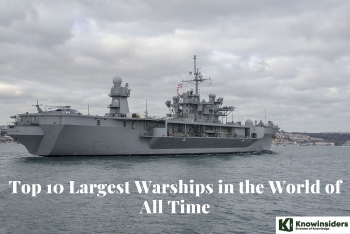 Top 10 Largest Warships/Aircraft Carriers of the World in History Top 10 Largest Warships/Aircraft Carriers of the World in History Continue reading to learn about the biggest ships or Aircraft Carrier in the world—you'll be astonished by how big these enormous vessels are! |
 Top 15 Weirdest and Funny Political Parties Around the World in History Top 15 Weirdest and Funny Political Parties Around the World in History There have been several political parties throughout history that have attempted to demystify the turbulent realm of politics while harboring less than serious political objectives. ... |























